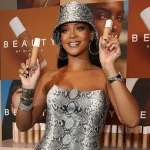Virtual Reality in Fashion: How VR is Revolutionizing Shopping Experiences
Delivering Multisensory Retail with VR
Virtual reality is transforming how shoppers interact with products, offering immersive experiences that replicate the tactile and visual elements of fashion. This technology enhances customer engagement by allowing them to experience the feel of materials and the precision of colors in a virtual space.
Simulating Textures and Fabrics
VR provides an opportunity to simulate the sensations of touching various fabrics, revolutionizing how customers perceive products. By using advanced haptic feedback technology, users can feel the textures and qualities of materials like silk, denim, or wool.
This simulation extends to understanding garment details, providing a realistic sense of weight and drape, essential for evaluating styles virtually. Through these simulations, VR enhances decision-making by offering an experience that closely resembles in-store tactile interactions.
Color Accuracy and Visualization
Accurate color representation in virtual reality ensures that customers view products as they truly appear, reducing the discrepancy between the virtual experience and the actual product. This precision is crucial in fashion, where color differences can impact purchasing decisions.
The immersive experience offered by VR allows users to see how colors interact with different lighting conditions and other garments. This visualization aids in making informed choices, ensuring that the chosen product aligns with personal style preferences and complements existing wardrobe items.
The Future of Virtual Reality in Fashion
Advancements in virtual reality are set to drive significant changes in the fashion industry. These developments are expected to influence emerging trends and help sustain customer loyalty through innovative technology.
Emerging Trends and Predictions
Virtual reality is poised to refine and transform how consumers engage with fashion. As VR technology becomes more sophisticated, shoppers can expect more immersive retail environments, allowing them to evaluate how clothing fits and feels without leaving their homes. In addition, the integration of artificial intelligence with VR can offer personalized shopping experiences, predicting consumer preferences based on previous interactions.
Major fashion brands are already experimenting with virtual fashion shows, enabling global audiences to experience new collections in real-time. This trend of virtual showcases is set to expand, providing brands with a cost-effective way to reach a wider audience. Moreover, virtual try-ons and digital fittings will become more common, reducing the need for returns and enhancing customer satisfaction by providing accurate fit assessments.
Sustaining Customer Loyalty through Technology
Incorporating virtual reality into retail strategies can be a pivotal element in sustaining customer loyalty. The use of VR can deepen consumer engagement by offering tailored shopping journeys and ensuring a memorable brand experience. Shoppers are more likely to return to stores that provide unique and convenient solutions they cannot find elsewhere.
Furthermore, integrating AI with VR systems allows brands to anticipate customer needs, providing specialized recommendations that strengthen consumer relationships. By offering exclusive content and unique virtual experiences, brands can foster a deeper connection with their customers, ensuring that they remain loyal and continue to engage with the brand over time. This blend of technology and personalized service is essential for maintaining a competitive edge in the dynamic fashion landscape.



